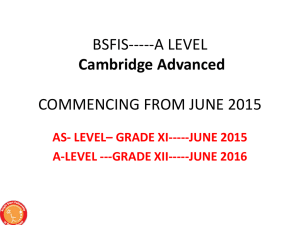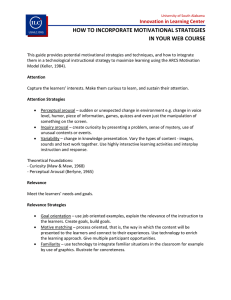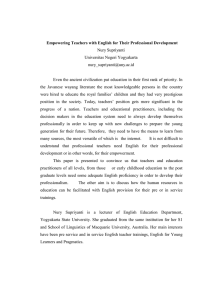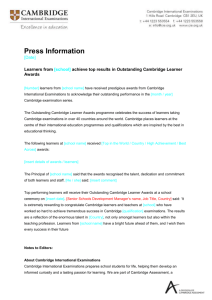LEARNING IN THE COMMUNICATIVE CLASSROOM JACK C
advertisement
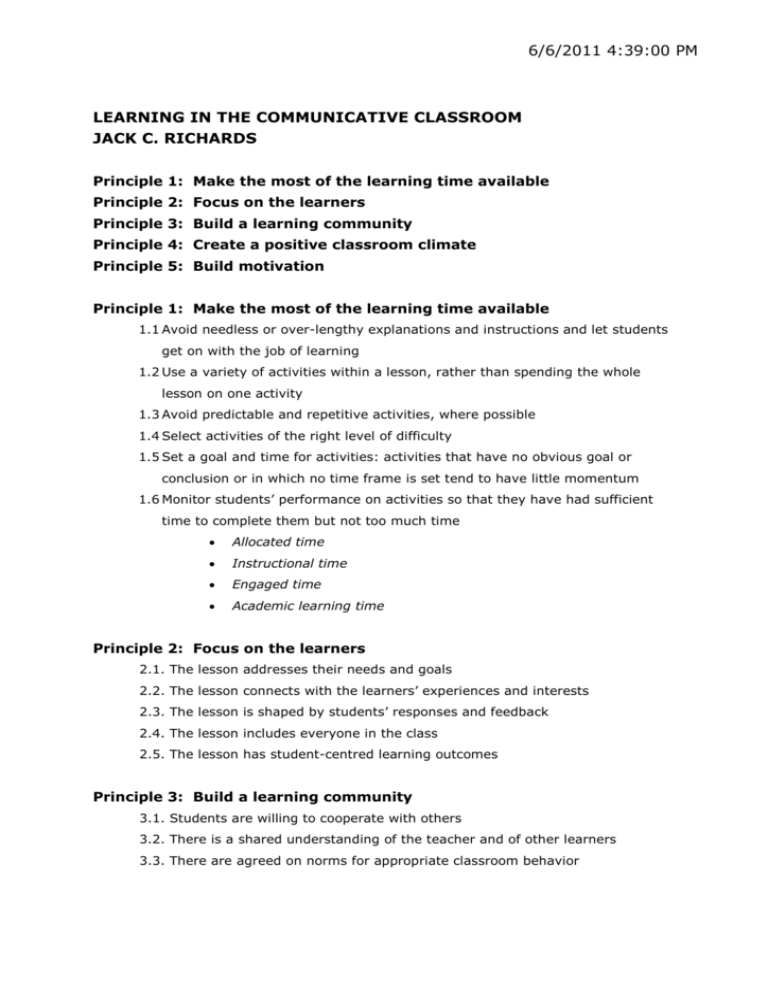
6/6/2011 4:39:00 PM LEARNING IN THE COMMUNICATIVE CLASSROOM JACK C. RICHARDS Principle 1: Make the most of the learning time available Principle 2: Focus on the learners Principle 3: Build a learning community Principle 4: Create a positive classroom climate Principle 5: Build motivation Principle 1: Make the most of the learning time available 1.1 Avoid needless or over-lengthy explanations and instructions and let students get on with the job of learning 1.2 Use a variety of activities within a lesson, rather than spending the whole lesson on one activity 1.3 Avoid predictable and repetitive activities, where possible 1.4 Select activities of the right level of difficulty 1.5 Set a goal and time for activities: activities that have no obvious goal or conclusion or in which no time frame is set tend to have little momentum 1.6 Monitor students’ performance on activities so that they have had sufficient time to complete them but not too much time Allocated time Instructional time Engaged time Academic learning time Principle 2: Focus on the learners 2.1. The lesson addresses their needs and goals 2.2. The lesson connects with the learners’ experiences and interests 2.3. The lesson is shaped by students’ responses and feedback 2.4. The lesson includes everyone in the class 2.5. The lesson has student-centred learning outcomes Principle 3: Build a learning community 3.1. Students are willing to cooperate with others 3.2. There is a shared understanding of the teacher and of other learners 3.3. There are agreed on norms for appropriate classroom behavior For the students: Let’s not be late for class. Always write your homework. Once a term you can “pass”, i.e. say that you have not prepared. In small group work only the L2 can be used. If you miss a class, make up for it and ask for the homework. For the teacher The class should finish on time. Homework and tests should be marked within a week. Always give advance notice of a test. For everybody Let’s try and listen to each other. Let’s help each other. Let’s respect each other’s ideas and values. It’s OK to make mistakes; they are learning points. Let’s not make fun of each other’s weaknesses. We must avoid hurting each other, verbally or physically. Principle 4: Create a positive classroom climate 4.1. The teacher creates a relaxed and informal atmosphere in the classroom 4.2. The teacher is not always in the role of teacher 4.3. The teacher uses activities that have a social purpose 2 Principle 5: Build motivation 5.1. The teacher expresses enthusiasm for teaching and learning 5.2. The teacher shows commitment to the students’ success 5.3. The teacher provides regular encouragement to learners 5.4. The teacher suggests effective learning strategies 5.5. The teacher reviews the motivational level of his/her teaching • Challenge Interesting content The novelty element The intriguing element The exotic element The fantasy element The personal element Fan Yi. Plateau of EFL Learning: A Psycholinguistic and Pedagogical Study. Available online from: wlkc.nbu.edu.cn/jpkc_nbu/daxueyingyu/download/014.pdf (Accessed: 05 DIC 2007). • Jack C. Richards and Thomas Farrell: Practice Teaching: A Reflective Approach. Cambridge University Press 2011 • Rose M. Senior: The Experience of Language Teaching. Cambridge University Press 2006 • Zoltan Dornyei: Motivational Strategies in the Language Classroom. Cambridge University Press 2001 3






